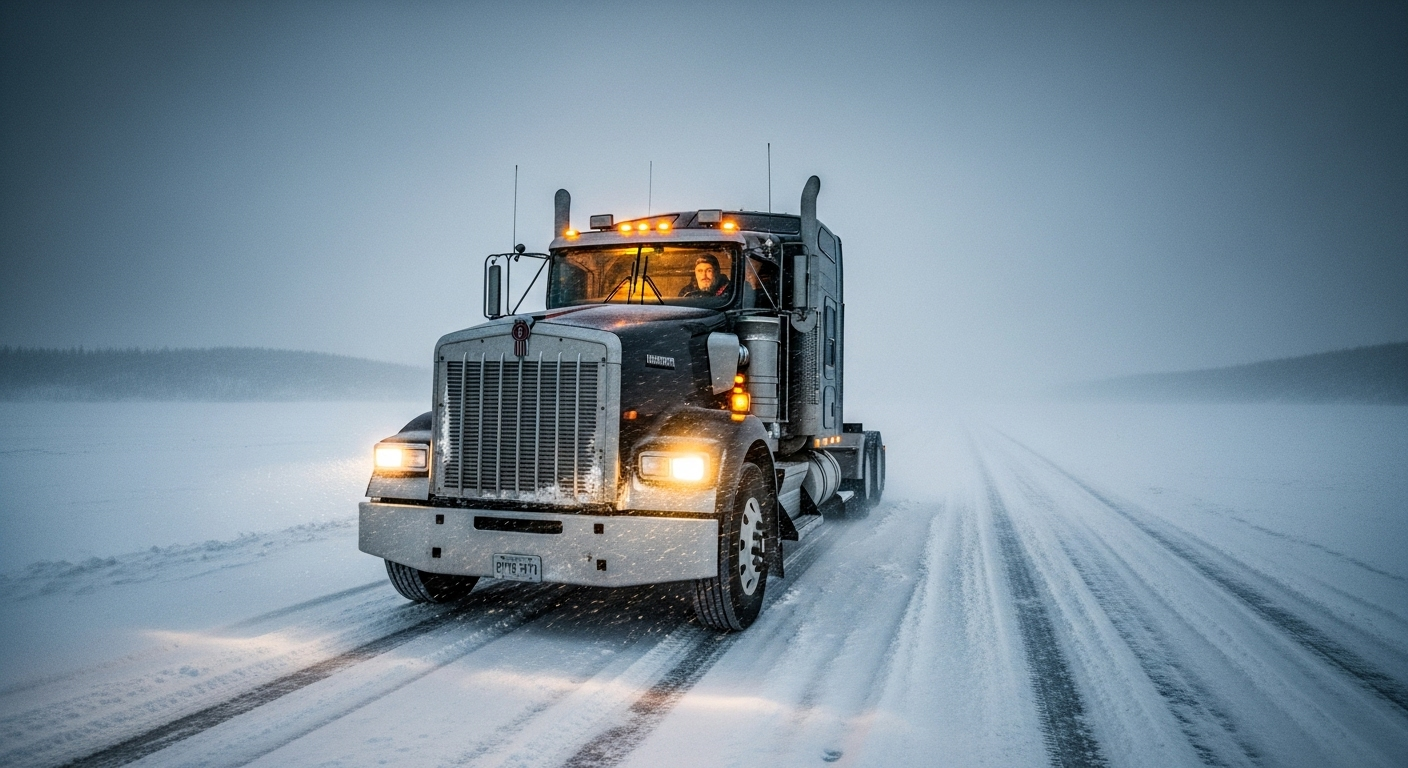Ever thought about driving on ice roads? Ice road trucking is one of the most thrilling and challenging jobs out there. Discover what it takes to become one, from training and safety tips to the unique challenges faced in this high-stakes profession.
The allure of ice road trucking attracts many drivers seeking adventure and a lucrative income. But what does it truly take to succeed in this demanding field? This article will explore training requirements, safety precautions, how to find work opportunities, the unique challenges of driving on ice roads, the essential equipment needed, and real-life experiences from seasoned ice road truckers.
Understanding the training and qualifications
To become an ice road trucker, certain qualifications are necessary. First and foremost, you should have a valid Commercial Driver’s License (CDL). Obtaining a CDL requires passing written and practical driving tests. Many trucking companies prefer applicants with experience in long-haul driving. Some may even require training specific to cold weather or hazardous driving conditions.Specific courses can include winter driving tactics, vehicle handling on slick surfaces, and emergency procedures. Safety training is also crucial, as it equips drivers with skills to handle potentially dangerous situations. Additionally, it's beneficial for truckers to understand the mechanics of their vehicles, especially how to maintain them in extreme weather conditions.Several trucking schools across the U.S. offer specialized programs tailored to ice road trucking, which can significantly bolster your resume. Completing these programs not only improves your chances of gaining employment but also prepares you for the unexpected situations that ice road trucking can present.
Equipping yourself and your truck properly for ice road conditions can make a significant difference in safety and performance. First and foremost, invest in high-quality winter tires designed for icy conditions. Many seasoned truckers recommend studded tires for better grip on ice surfaces.In addition to tires, you should consider adding chains for additional traction. Having an ice scraper on hand for your windshield and mirrors can help maintain visibility during storms. A robust emergency kit, including items like flares, an additional heater, and mud flaps could be necessary for emergency scenarios.On a personal level, winter clothing is equally important for comfort and safety. Layering is key; wearing thermal base layers, waterproof outer layers, and insulated boots will keep you warm. Always have extra gear in the truck in case of emergencies, as you may find yourself stranded in sub-zero temperatures. Having a reliable GPS system tailored for truck routes can also provide critical information in navigating unfamiliar areas.
Finding your opportunities
Finding work as an ice road trucker requires some research, as these positions are not as common as standard trucking jobs. The peak season for ice road trucking generally aligns with winter months when the freeze is stable enough to create safe passage.Several companies specialize in ice road trucking, often in regions like Alaska or Canada. Most require previous long-haul experience, so networking within trucking circles can help you discover job openings. Joining forums or groups online focused on trucking can also provide leads.Recruitment during these months typically ramps up in late fall as companies prepare for the icy months ahead. It is worth reaching out to companies well in advance of the season to express your interest. You may be able to secure a position before the program officially opens, giving you an advantage over the competition. Additionally, leveraging social media platforms like LinkedIn could connect you with recruiters in the industry.Safety precaut
ions and practices
Safety is paramount in ice road trucking. The first rule is to never underestimate the conditions. Ice can shift, and road quality can change rapidly. Before any trip, rigorous checks should be done on both the vehicle and the route. Drivers need to thoroughly inspect tires, brakes, and fuel lines, as cold temperatures can create unforeseen mechanical issues.Moreover, ice road truckers should always carry emergency supplies. Basic necessities include food, water, a first aid kit, blankets, and a flashlight. Additionally, a shovel and traction aids can be life-saving tools if stranded. Another critical practice is to travel with a buddy whenever possible. Solo drivers face an increased risk in emergency situations, as help can often be far away.Mapping out your routes beforehand and keeping an eye on weather conditions is also vital. There are many resources available, including forums and apps where experienced drivers share real-time road conditions and safety tips. Staying informed can significantly enhance your ability to react to changing circumstances.
Challenges of driving on ice roads
Working as an ice road trucker comes with unique challenges that test both skill and resolve. First, there’s the physical strain of long hours spent on the road under harsh conditions. The cold can be brutal, and long stretches of ice can lead to fatigue. Staying alert is essential and shifts may require drivers to take scheduled breaks to avoid burnout.Additionally, visibility can be a significant issue due to snowstorms, fog, or the low light conditions prevalent in winter months. Ice can also create dangerous situations like skids and slides, heightening the need for defensive driving techniques.There’s also the psychological aspect of the job. Ice road trucking can be isolating. Many drivers spend long periods away from home, and the nature of the work can be stressful. To mitigate this, staying connected with friends and family through calls or video chats during breaks can provide a comforting reprieve from the solitude of the road.

